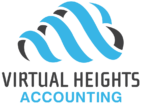As a small business owner in Canada, tax planning is an essential part of your financial strategy. By taking the time to plan ahead, and understand the available tax savings, you can help ensure that you are maximizing your profits and keeping more of your hard-earned money. Here are a few important tips to keep in mind when planning in order to save money on taxes.
The Small Business Deduction
As a small business owner of an incorporated Canadian Privately Held Corporation, you may be eligible for the small business deduction. This allows you to pay a lower corporate tax rate on the first $500,000 of your active business income. This means on the money you leave in the corporation, you will only pay corporate tax of approximately 11-12% (depending on which province you are in) on the net income of the company. This can add up to significant savings over time, which will allow you extra funds each year to re-invest and grow your business further. Note that this is only available to incorporate for-profit privately held companies and is not available for unincorporated sole proprietorships.
Splitting income with Family Members
Many laws have changed around the availability of income splitting with members of your family. These include such considerations as the tax on split income (TOSI) and kiddie tax for dividends paid to non-active shareholders or related shareholders of specific ages.
However, if your family members are active and participating employees of the business, you should make sure they get paid for their work! This can include putting them on the payroll to ensure they are paid for their efforts. The main thing to ensure is that they are paid a reasonable (i.e. fair market value) wage for their efforts. You can consider putting your family members on the payroll in both a sole proprietorship or an incorporated small business. Also, be aware of the employment standards/work requirements of your province. Each province has different specific rules on the ages that a child is able to start working and the specifications of work they are required to do.
There are also further options available for family income splitting involving trusts or having your family own shares directly. Careful considerations and expert tax consultation is required if you are looking at structuring these types of structures. This is to ensure you’re staying within all the rules. We have found the more complex strategies are best for longer-term tax-saving strategies.
Capital Cost Allowances
Capital assets are anything you purchase for the business that has value over one year. An example of a capital asset is a computer purchased for your business. Capital assets are required to be capitalized in your business which means they are recorded on your balance sheet and are not available for immediate write-off against your income (like expenses are). You are able to deduct capital assets though for tax purposes using capital cost allowance (CCA). Capital cost allowance (CCA) allows you to claim deductions for the write-off of your business assets. This can help you reduce your taxable income and lower your overall tax bill. The Canada Revenue Agency requires different assets to be put into different classes. The class is then assigned a percentage of deduction that is allowable. The specific class that your asset is put in is important to determining the write-off it is eligible for.
Be sure to ensure you are recording capital assets in your accounting in different accounts to ensure you have distinguished the types of assets you have when completing your corporate tax return. For example, vehicles would go in a different class than machinery and equipment.
RRSP Contributions
If you have a registered retirement savings plan (RRSP), you can contribute pre-tax dollars to your plan. This reduces your taxable income and helps you build a more secure financial future. If you are an employee of your corporation you can even consider making direct from employer contributions from your corporate business account to your RRSP’s. These are required to flow through your payroll as they are subject to payroll tax considerations (usually only CPP if you are exempt from EI).
If you are an unincorporated sole proprietor, that additional step is not needed as your business income is taxed as personal income. In this situation, the RRSP contributions are not considered to come from an employer. However, they are a great way to save tax now and invest in your future.
Other Tax Credits and Grants
There are several tax credits and various grants available to small business owners in Canada. Tax credits may be available for such things as scientific research and development (SRED) and training and education (apprenticeship credits etc).
There are also many grants available. They are too many to discuss in one article and they change often. For government grants, were recommend using the following grant tool to search for ones that may be applicable. Check out this great benefits finder tool here.
Summary – Saving Money on Taxes as a Small Business Owner
By keeping these tips in mind, you can help ensure that you are maximizing your tax savings. Whether you are just starting out or have been in business for years, tax planning is an essential part of your financial strategy. If you have questions or need help with your tax planning, be sure to consult with a trusted accountant, financial advisor, or your legal team (as applicable).
This blog is intended for general use and understanding. Specific cases can alter recommendations which are often based on current court cases. These recommendations may evolve as new court cases or CRA interpretations become available. Thus direct professional advice is always recommended to ensure you are getting the right information for you and your business.
Virtual Heights Accounting is a CPA firm that operates in the virtual world. We provide virtual accounting and tax services for your growing Company. Contact us at www.vhaccounting.ca/contactus or follow our blog on your chosen social media source.





